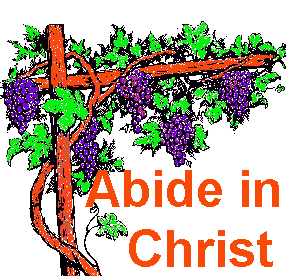Thessalonica, the capital
of Macedonia, occupied a strategic location in the
first–century missiology and world evangelism. There
was an ancient saying that "So long as nature does
not change, Thessalonica will remain wealthy and
prosperous."
She was a wealthy city
with fertile soil, forest and mineral deposits in
the area. Thessalonica was located on the Thermaic
Gulf and was Macedonia’s chief outlet to the sea.
Her seaport was situated at the junction of the
northern trade route to the Danube and the Egnatian
Way running across the Balkans and linking the East
to the Adriatic Sea and Rome.
During Paul’s day,
Thessalonica was a free city. The proconsul of
Macedonia had official residence there, however he
did not interfere with the local government unless
some Roman law was violated. Rome respected the
rights of these free cities, so long as no disorder
and rebellion erupted. Self-government, within
limits, was allowed through a city council and board
of magistrates.
Paul seized the unique
opportunity to reach this mobile, cosmopolitan
population on his second missionary journey.
AUTHOR:
Paul the apostle is the stated author (1:1; 3:17).
The vocabulary, style and doctrinal content supports
this claim. The external evidence for the second
letter is even stronger than the first one.
DATE:
Paul writes his second letter a few months after
sending the first letter to the Thessalonians in A.
D. 50-51 from Corinth. These two letters are among
the earliest of Paul’s writings and the New
Testament books.
PURPOSE:
Paul’s first letter to the church at Thessalonica
did not settle all the differences in the church
there. This second letter is written to correct
misunderstandings regarding the Second Coming of
Christ which were not corrected with the first
letter. The "day of the Lord" had not already come,
and it will not come until after "the man of
lawlessness" has appeared (2:9-10). With some of the
members it had precisely the opposite result. There
was some opposition to Paul’s authority and even
defiance toward him. Therefore, Paul repeats his
"command" for discipline (II Thess. 3:6, 10, 14).
There were deceivers who falsified letters in Paul’s
name to carry their point in the church (2:1f). A.
T. Robertson strongly asserts,
Paul’s keen resentment
against the practice should make us slow to accept
the pseudepigraphic theory about other Pauline
Epistles. He calls attention to his own signature at
the close of each genuine letter. As a rule he
dictated the epistle, but signed it with his own
hand (3:17)."
Paul’s central concern is
to correct their mistaken view regarding the day of
the Lord and to rebuke their idleness.
STYLE:
The second letter is sharper in tone than the first.
It is also briefer, almost like a quick memo shot
off from the pen of a busy pastor, or mission
executive. It may be with some annoyance because of
their meddlesome idleness.
THEME:
The day of the Lord will not arrive until after the
man of sin has appeared. Second Thessalonians is the
theological sequel to the first letter. It is a
letter of encouragement, explanation and exhortation
to a persecuted church.
Dr. Merrill C. Tenney
points out that every major doctrine of the
Christian faith is touched upon in these two letters
of Paul.
Paul and those who
received his epistles believed in one living God (I
1:9), the Father (II 1:2), who has loved men and has
chosen them to enjoy his salvation (II 2:16; I 1:4).
He has sent deliverance form wrath through Jesus
Christ, his Son (I 1:10), and has revealed this
deliverance through the message of the gospel (I
1:5; 2:9; II 2:14). This message has been confirmed
and has been made real by the power of the Holy
Spirit (I 1:5); 4:8). The gospel concerns the Lord
Jesus Christ, who was killed by the Jews (I 2:15).
He rose from the dead (I 1:10; 4:14; 5:10). He is
now in heaven (I 1:10), but he will come again (I
2:19; 4:15; 5:23; II 2:1). To him is ascribed deity,
for he is called Lord (I 1:6), God’s Son (I 1:10),
and the Lord Jesus Christ (I 1:1, 3; 5:28; II 1:1).
Believers receiving the word of God (I 1:6), turn
from idols, serve God and wait for the return of
Christ (I 1:9, 10). Their normal growth is
sanctification (I 4:3, 7; II 2:13). In personal life
they are to be clean (I 4:4-6), industrious (I 4:11,
12), prayerful (I 5:17), cheerful (I 5:16).
Theoretically and practically the Thessalonian
letters embody all the essentials of Christian
truth."
The major emphasis of
Second Thessalonians is eschatological. There will
be a future time of judgment coming when God will
settle His accounts (1:5-10). Paul corrects their
misunderstanding about the Day of the Lord (2:1).
Some in the church had fallen into the error of
thinking that the day had already arrived, however
Paul instructs them that certain things must occur
first. Before the day commences there will be an
all-out rebellion against God (2:3). Many will
revolt on a world–wide scale against their Creator.
There will be the revealing of the man of
lawlessness (2:3b). As Christ shall be revealed in
His "time" even so shall the antichrist. He is a
mystery to be unfolded and make manifest. The
terrible judgment which is to come upon him and all
those who follow him is sharply contrasted by the
glory of Christ in which all the elect shall share.
Title: Introduction to 2
Thessalonians
Series: Introduction to
Bible Books



